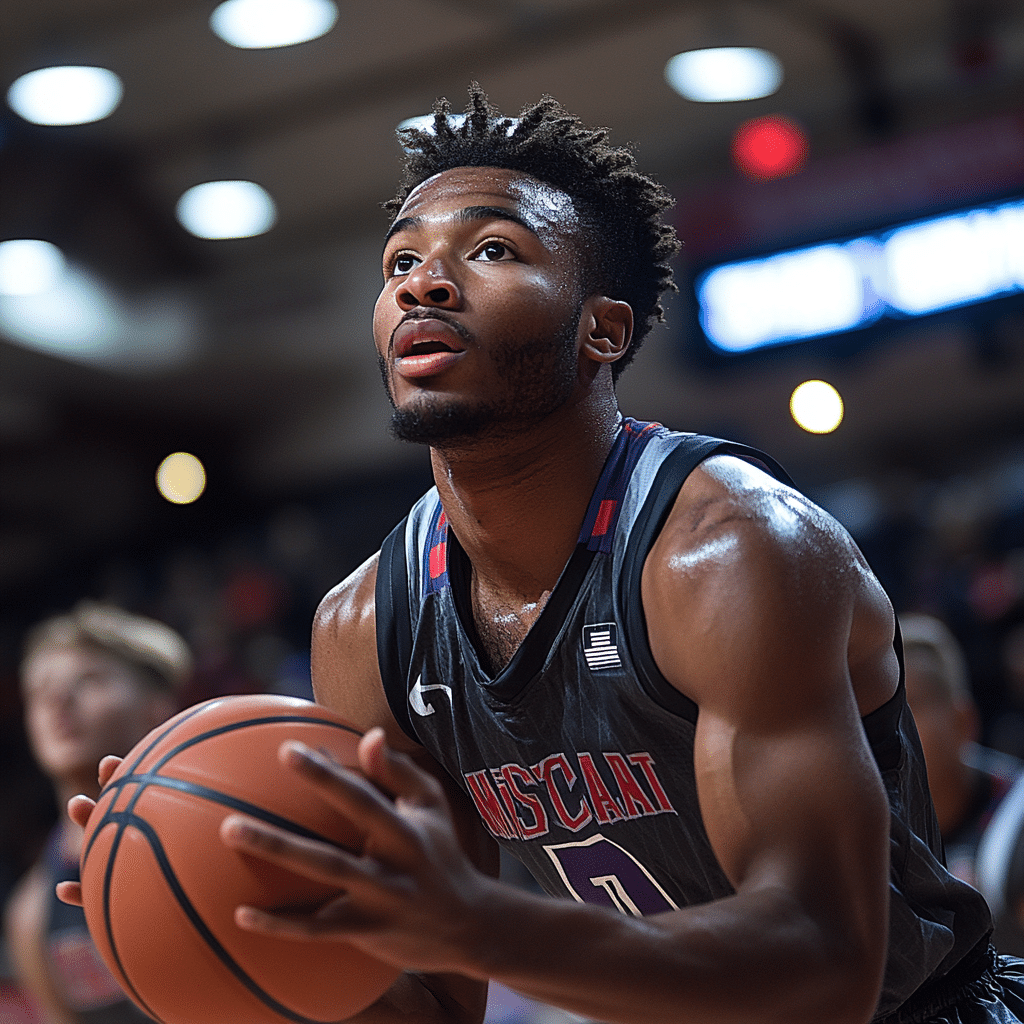The West Coast Conference (WCC) has been a significant player in shaping collegiate athletics on the West Coast since its establishment in 1952. This conference has not only contributed to multiple athletic narratives but has also solidified its place in the academic landscape, providing a platform for success in sports that often don’t receive the same attention as the titans—the Pac-12 and Big Ten. The WCC has established an identity built on balancing athletic prowess with academic achievement, particularly exemplified by institutions like Gonzaga University and the University of San Francisco.
Emphasizing both sports and education, the WCC has carved out a cultural legacy that distinguishes it from its larger competitors, making it a unique aspect of the collegiate sports tapestry. Its commitment to integrity, community, and a well-rounded student-athlete experience offers a refreshing perspective in the often commercially-driven world of college athletics.
Top 7 Ways the west coast conference Influences Collegiate Sports

1. Basketball Powerhouse: Gonzaga’s National Recognition
Gonzaga University has become synonymous with success in college basketball, consistently making NCAA tournament appearances and achieving deep runs. This remarkable track record has brought national attention to the WCC, positioning it on par with traditional powerhouses like the Atlantic Coast Conference (ACC) and the Pac-12. The Gonzaga Bulldogs have shown that schools in the WCC can compete with the elite, showcasing talent and determination that excite fans and draw respect from other conferences.
2. Commitment to Student-Athlete Welfare
The WCC stands out as a leader in prioritizing the well-being of its student-athletes. By implementing policies focused on mental health resources and academic support, the WCC has set a standard within the NCAA. This commitment contrasts sharply with the frequent scandals arising in larger conferences, reinforcing the WCC’s dedication to ethical sports governance. Their proactive stance allows athletes to thrive both on the field and in the classroom, ensuring a more holistic college experience.
3. Emerging Sports Success: Santa Clara and Women’s Soccer
Santa Clara University’s women’s soccer team has made tremendous strides, consistently competing at a national level. The team’s successes not only add to the WCC’s accolades but demonstrate that athletic programs outside the more prominent football conferences can thrive. These accomplishments highlight how the WCC fosters diverse athletic programs, underscoring its dedication to supporting sports often overshadowed by football-centric narratives in conferences like the Pac-12 and Mountain West Conference.
4. Inclusive Leadership and Diversity Initiatives
The WCC shines in its commitment to diversity and inclusion, championing initiatives that resonate within the collegiate athletics community. Strong female leadership in the WCC administration sets a precedent for other conferences to emulate. While discussions about equity in sports continue, the WCC has stepped forward, recognizing that diversity enriches the experiences of student-athletes and strengthens community ties.
5. Strategic Growth and Expansion Opportunities
In response to the shifting landscape of college athletics, the WCC has taken a strategic approach to growth. This includes exploring opportunities for expansion and attracting new member institutions. With notable schools shifting conferences, such as the recent movement from the Mountain West Conference to the Pac-12, the WCC remains agile in enhancing its competitiveness. This flexibility could bolster its appeal and geographical reach, broadening the conference’s impact.
6. Rivalries and Community Engagement
One of the WCC’s exciting features is its vibrant regional rivalries, particularly in basketball. Matchups like Gonzaga vs. Saint Mary’s generate buzz, engage local communities, and drive attendance at games. These feuds build strong connections with fans, fostering community pride and supporting a lively sports culture. Such rivalries enhance the overall experience for student-athletes, fans, and the institutions involved.
7. Television Contracts and Brand Exposure
Recent television contracts have vastly increased the visibility of WCC sports. Partnerships with broadcasting giants like ESPN and CBS Sports have allowed lesser-known programs to step into the spotlight. The WCC’s commitment to promoting its brands resonates with a strategy that drives national engagement, akin to the approaches taken by bigger conferences like the ACC or Pac-12. By showcasing a wider variety of sports, the WCC enables its teams to capture the attention they deserve.
The Role of the west coast conference in National Conversations
As collegiate athletics evolve, the west coast conference is shaping discussions centered on athlete development and organizational governance. The implications of NIL (Name, Image, and Likeness) opportunities are significant, as the WCC expertly carves its path—distinct from larger conferences that sometimes struggle to balance commercial interests with athlete welfare.
WCC practices could provide a blueprint for other mid-major conferences trying to elevate their status against dominant leagues like the Pac-12 or Big Ten. By focusing on athlete well-being and fostering growth in less mainstream sports, the WCC stands as a testament to the potential of smaller conferences making meaningful impacts at the national level.

Innovating the Future of Collegiate Athletics
The west coast conference’s dedication to nurturing a competitive yet supportive environment positions it as a leader in collegiate athletics. Its forward-thinking approach to conference realignment and player compensation continues to shape collegiate sports. The principles advocated by the WCC resonate deeply, emphasizing local culture, integrity in sportsmanship, and the heart of college athletics: the student-athlete.
In a sports world often dominated by larger conferences, the WCC quietly emphasizes the foundational values of athletics. This dedication not only builds its legacy but also paves the way for a new era of engagement and success in collegiate sports. The WCC’s resolve to balance competitive integrity with the well-being of its participants stands as an enduring example for both current and future generations of student-athletes.
By championing these ideals, the west coast conference encourages us to look beyond the headlines and appreciate the deeper stories that exist within college athletics—stories that embody the spirit of competition while nurturing the future of sports.
west coast conference: Fun Trivia and Interesting Facts
A Legacy of Athletic Excellence
The west coast conference (WCC) isn’t just about sports; it’s a cultural touchstone in its own right. Established in 1952, the WCC has seen numerous standout athletes, many of whom have graced the national stage. A fun fact: the legendary artist Bernie Taupin, known for crafting iconic lyrics, is a huge supporter of college athletics, including teams from the WCC. The conference’s history has been filled with champions, making it a fascinating landscape to explore.
Pop Culture Connections
Did you know that several famous figures have ties to the conference? For instance, when the basketball teams hit the court, you might catch a glimpse of a fan celebrating a birthday, perhaps even someone like Jimmy Carter enjoying the game on his special day. While WCC players are busy making their mark, pop culture references often intertwine with sports events. Athletes have even inspired artists, with some song lyrics echoing themes of determination and teamwork reminiscent of Taylor Swift’s style lyrics.
Community and Beyond
The WCC isn’t just rich in sports history; it’s about community impact too. Schools in the conference engage in numerous outreach programs that resonate well beyond the campuses. For example, teams often come together for charity events, creating a sense of unity. Moreover, the diversity among the student-athletes is as rich as a bowl of nutritious broccoli, and you might wonder, Is broccoli good For Dogs? This kind of engagement contributes to a warm, inclusive vibe that keeps fans and players linked to the local culture.
Sport Meets Society
The WCC has also been in the spotlight, addressing important issues such as safety on campuses. After the troubling incident regarding the Unlv active shooter, discussions on safety in collegiate sports gained significant traction. Events like this remind us how sports can connect us while also highlighting the need for community resilience. So, while you sit back and watch the games, know that the WCC is more than just competition—it’s shaping lives and fostering change!
In conclusion, the west coast conference embodies a rich tapestry woven from sports, culture, and community engagement. Whether it’s celebrity endorsements, like endorsements from notable figures such as Christopher O’Connell, or crucial community initiatives, the WCC continually impacts people’s lives for the better.




